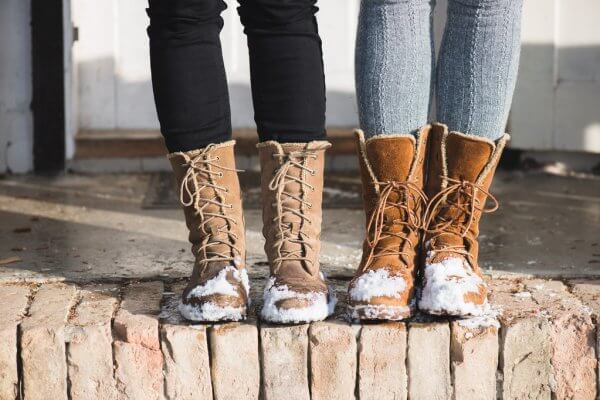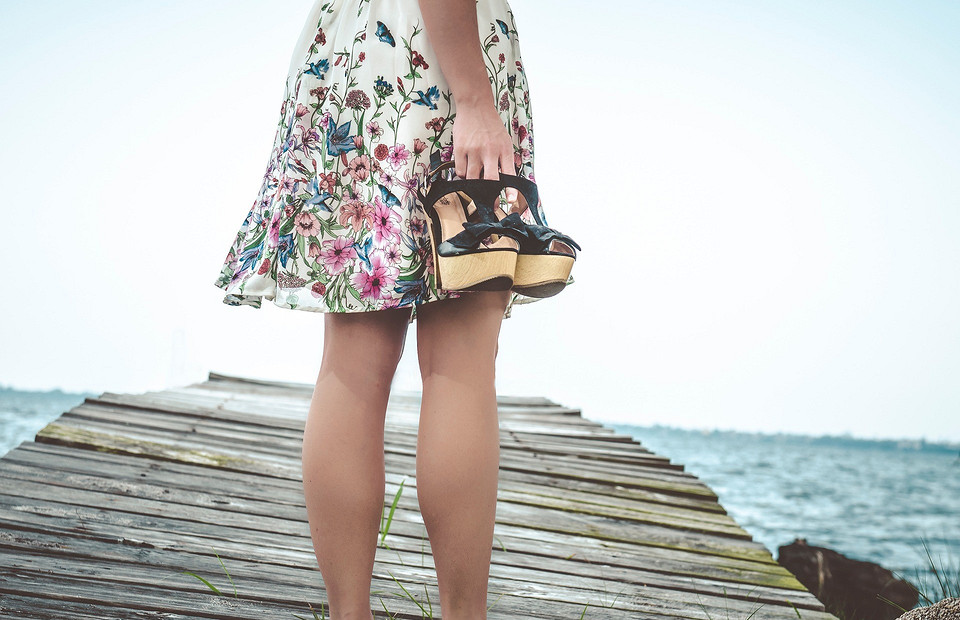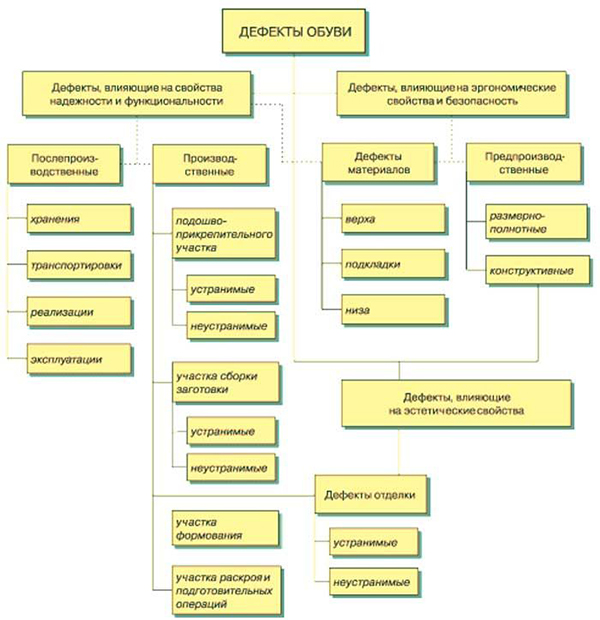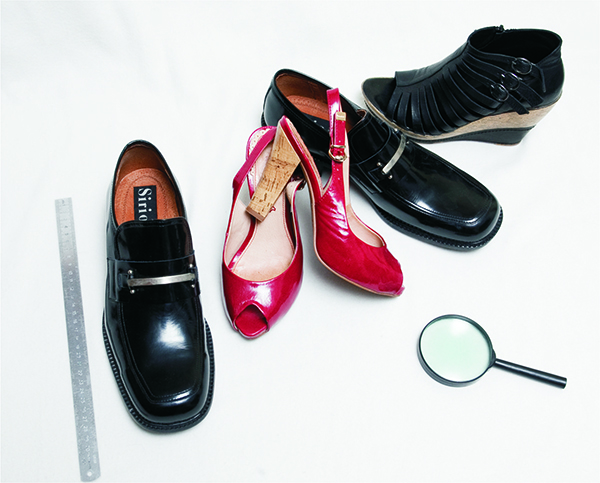These and other problems occur when the toes are severely compressed, the forefoot is stressed, or the shoe does not fit properly. It may also be the wrong width or the materials may be of poor quality. If you have experienced these symptoms, you should consider changing your shoes.
![]()
- Winter shoes guarantee
- Warranty period for winter shoes
- Related articles.
- Results of surgical treatment of ankle fractures
- Shoes with upper in 'Saten' leather, natural leather with fabric effect, pearl/metal effect, laminated leather, coated leather (polyurethane, etc.).
- Patent leather upper, pull-on effect patent leather and patent leather patches.
- How to choose shoes
- The right way to buy shoes
- Return options
- Costs and deadlines for shoe reports, regional differences
- The most important stages of the shoe market report
- Cost of forensic examination
- The essence of the procedure
- Who can complain?
- What happened?
- Material damage
- If the leather of your shoe is cracked
- Application
Winter shoes guarantee
When buying a shoe, the buyer naturally expects that it will serve him faithfully. It should impress with its quality and appearance. But what if the newly purchased boots or ankle boots suddenly develop a defect or start to leak after the first or second wear? Can I return them to the store and if so, how? ITAITA finds out how long the winter shoe guarantee lasts and how to claim it.
The Consumer Rights Protection Act specifies in which cases, within what deadlines and in what form a buyer can complain, return or exchange his purchase.
The warranty period for winter shoes is regulated by GOST. Depending on the type of shoe, its intended use and the season, the deadline may vary.
Warranty period for winter shoes
A buyer who wants to return a purchase for objective reasons may ask: from what date does the warranty period begin?
If you purchased winter shoes or boots in one of the winter months, the warranty period begins on the date of payment.
On the other hand, if you have purchased seasonal shoes in advance, the start of the warranty period is considered to be the beginning of the season. However, keep in mind that the start of the seasons varies depending on the location.

For example, summer in Moscow begins on May 1st, autumn on September 1st, winter on November 1st and spring on March 1st. You can check with Rospotrebnadzor about the exact dates of the season that interests you in your region.
There are two types of guarantees: one set by the seller (usually 14-30 days) and one set by the manufacturer - it is regulated by GOST standards and is allowed not be shorter than 30 days.
Important: Unscrupulous sellers often refuse to return customers on the grounds that the product was purchased as part of a seasonal sale. Such behavior is not legal. Such purchases will be refunded according to the general rules.
Related articles.
The aim of this study is to investigate the influence of a milky medium on the strength of thread attachment details Tops footwearas well as the influence of the milky medium on the physical and mechanical properties of special shoes footwear for workers in the dairy industry.
Limit deviations Outside outer diameter of parts of in non-twisted sections must not be
when drilling or turning the ends of Of the parts A smooth transition must be guaranteed
where: D and d Outside Diameter of transition tips, mm; γ – angle of inclination of the fittings.
Results of surgical treatment of ankle fractures
Depending on the size of the fracture posterior Edge of the tibia less than 1/4 of the articular surface, any displacement can be neglected. Based on the literature review, the following features of surgical treatment can be identified: 1. for fractures of both ankles i.
When merging parts upper part orthopedic Shoes are Pfaff sewing machines that are very advantageous
for sewing parts Details Shoes e.g leather tanned, woven and synthetic leathers leather Single needle sewing machines 230, 34M and 330-8 cl.
Shoes with upper in 'Saten' leather, natural leather with fabric effect, pearl/metal effect, laminated leather, coated leather (polyurethane, etc.).
A characteristic feature of natural leather 'Saten - fabric effect leather - is the embossed decor in the form of various patterns imitating fabric, with a characteristic satin finish, while the feature of laminated, pearl metallic effect and coated Leather is its decorative finish.
If the shoes get dirty, dirt and dust can be easily removed with a soft cloth without the need for any special treatment.
![]()
Patent leather upper, pull-on effect patent leather and patent leather patches.
A special feature of patent leather is the wrinkled leather surface that forms in the shoe. This isn't a disadvantage, it just gets stronger with wear. A special feature of patent leather with a 'dripping effect' is the color change of the leather to a lighter shade, which can increase as the shoe is worn.
If the shoe surface is dirty, clean it with a soft cloth or use a special shoe care product for patent leather shoes.
Conventional shoe polishes should not be used as they discolor and dull the lacquer layer. Patent leather shoes should not be worn at temperatures below -5°C. Keep in mind that patent leather can fade in the sun or under bright light and change its original color.
![]()
How to choose shoes
If you can't go to the doctor or don't have time, choose shoes from the Extra-Komfort brand, which are specifically designed for atypical feet (Extra-Comfort shoes are marked with an H on the insole). Such shoes prevent blisters, fatigue and pain and reduce the likelihood of bunions in the big toe.
You should also pay attention to the material of the shoes. It is good if the upper is made of genuine leather, and the interior of the chosen model has no seams, especially in the area of the big toe bone.
Pay attention to models that have laces and a zipper at the same time. Laces help hold the foot together, do not restrict blood flow to the foot and allow the volume of the shoe to be changed. A zipper, on the other hand, makes opening and closing easier.

If you have an extremely flat foot, the main thing you should pay attention to when opening is that the volume can be adjusted. Then you can stretch the shoe as much as possible and adapt it to almost any foot volume.
The insole should have arch support and be removable. You can then exchange the normal version for a custom-made one on the advice of a podiatrist.
Also look for models with soft, anatomical insoles that adapt to the contours of the foot.
The right way to buy shoes

When you go shoe shopping, you should follow the following rules to find the right footwear:
- Determine your body size and always choose shoes taking this parameter into account.
- Your foot shouldn't slip in the shoe, it needs support.
- Go shopping in the afternoon when your foot is still slightly swollen.
- Put on the socks or tights you want to wear with this model.
- When trying on, wiggle your toes to make sure the sock is slightly shorter.
- Do not buy shoes that have seams on the inside as this can cause discomfort later.
- Walk around, put on your shoes and wait a while. If your foot sweats immediately, it may be that the shoe is not 'breathing'.
Comfortable shoes from a good manufacturer increase comfort. Walking is easier, your feet don't hurt and you aren't tired at the end of the day. So it's worth taking the time to find the right shoes. Especially if your feet already have problems.
Return options
If you bought an item in a store and it doesn't fit you, you can return it to the seller.

You can get your money back in various ways
- By asking the seller for a refund for the defective product. You must do this in writing. A complaint in the Complaints and Suggestions Book is not considered a request for a refund;
- If the retailer refuses to test the product itself or requests that the store do the testing. The determination that the goods are of inadequate quality and cannot be used is recorded in a technical report. Presentation of this document to the seller should be the basis for a refund and reimbursement of the expert's services;
- Refusal to pay is grounds for filing a lawsuit in court. The outcome of a lawsuit can lead not only to reimbursement of the purchase price, repair costs and expert costs, but also to compensation for non-material damage.
The consumer's belief that he is in the right always leads to a refund of the amounts spent. The most important thing is that you use all available means to protect your rights.
Costs and deadlines for shoe reports, regional differences
You can find out how much an independent shoe inspection by an expert costs based on a number of factors. The decisive factors are:
- the type of shoes examined;
- the extent of the defects identified – extensive damage to the pair or localized defects;
- the region;
- the urgency of the investigation;
- the number of pairs to be examined.
The national average price is between 2,000 and 6,000 rubles. Shoes, boots and ankle boots cost from 4,000 rubles. Prices for test shoes, ballet shoes and sports shoes start at 3,000. There is no specific rate for the prices.
The total cost of examining shoes depends on the diagnostic methods used, that is, whether only organoleptic tests are carried out or whether laboratory tests are also included. Additionally, the cost of a single test is significantly influenced by the cost of a pair of shoes being tested at a given time.

The differences in testing may not be significant. The expert relies on current legislation. An independent merchandise expert inspection of the entire shoe must be carried out by an organization not affiliated with the store or the buyer. The objectivity of the investigation is evidenced by the fact that both interested parties have the right to participate in the investigation. Choosing a location for an expert examination can be difficult due to the large number of offers.
In Moscow, such a procedure is carried out by the Laboratory of Expert Examinations and the Association of Forensic Physicians. In the northern capital, the Center for Quality Control of Goods, Works and Services of the St. Petersburg State Budgetary Authority and the State Expert Office are located on Fontanka Street. EI Donexpertiza is located in Rostov-on-Don. There are similar organizations in the CIS countries, e.g. B. the College of Court Experts, which operates in Minsk and Gomel.
The most important stages of the shoe market report
- Our expert will inform you about the procedure for commissioning and carrying out an expert report in court.
- We will provide you with an information letter for the court.
- After the court expert has been appointed, we will collect the documents and the shoes from the court ourselves.
- You carry out the forensic report within the deadline set by the court. You must bear the costs for the report yourself.
- We bring the report, the files and the shoes to the court ourselves.
- If necessary, the expert will explain the investigation in court.
- Our expert will provide you with a list of documents and items to be examined.
- You deliver the shoes and the required documents personally or through a representative.
- The examination will take place within the number of days agreed with you after conclusion of the contract and payment.
- We will inform you when the report is ready.
- You will receive the report, the documents and objects examined.

The hallmark of a forensic shoe examination is one Extrajudicial independent assessment of shoes is the commissioning and implementation of a forensic report in strict compliance with the current procedural regulations of the Russian Federation. The forensic assessment is carried out on the basis of a court order or a decision of an investigator (investigator) on the appointment of a forensic expert.
All case materials and examination items for forensic examination of goods are collected from the court by our employee or an employee of FGUP Spetssvyaz and delivered to our expert institute in sealed form and opened in the presence of the parties or their representatives.
The litigants can only view the results of the forensic examination in court. The expert report on the forensic (commodity) examination, together with the documents received by the court, is returned to the court by our employee or an employee of the Federal State Unitary Enterprise 'Spetsvyaz', which significantly shortens the examination time.
Cost of forensic examination
Cosmetological examination of shoes
Examination of shoes and footwear products (1 pair)
Deadline for review – 3-5 working days. It is possible to request a shortened deadline.
Every 'footwearregardless of the country of manufacture and the price, must meet the requirements of GOSTsOtherwise she is is faulty..
A defect is a product with a detectable and unrecoverable mismatch in one or a set of indicators.
A manufacturing defect (defect) is a defect that occurs in the production of the goods, usually as a result of a violation of the technological process for producing the product.
A hidden defect becomes apparent when using shoes.
The following critical defects are unacceptable in shoes:
- Cracks in the film covering the footwear;
- Incorrectly attached (assembled) parts;
- Loose seams, poorly connected seams;
- Broken heel;
- Non-glued outsole;
- gaps between parts of the shoe sole;
- protruding mechanical fasteners;
- mismatched pairs of shoes (different colors);
- instability of the leather coating;
- other defects that prevent the product from being used as intended.
Common manufacturing defects:
- Peeling of the sole or lining beads - these manufacturing defects can cause the shoes to become waterlogged;
- loose paint on the upper and lining - these manufacturing defects can cause deterioration of the items (pants, socks).
- Cracks and chips in the paint coating (cracks in the leather of the upper) can affect the appearance of the shoes;
- Bumps and wrinkles – may cause discomfort when worn;
- Cracked soles and others.
The essence of the procedure
When ordering an expert opinion, competent professionals conduct a comprehensive examination of a pair of shoes or sneakers in order to identify both obvious visible and hidden defects and possible causes of their appearance. By commissioning an expert report, the seller not only protects himself and his future customers from unpleasant situations, but also solves several problems:
- He receives insurance for the goods delivered by the manufacturer;
- Documented description of the defects to facilitate the return of the entire shipment;
- confirmation of product value;
- Determining correct product storage standards;
- Obtaining the quality certificates required for successful sales.
An independent inspection of shoes can also be ordered by the individual buyer.
Defects found during inspection may be a reason for the mandatory return of the goods by the seller. These can include:
- deformation or separation of the sole;
- cracks, chips, tearing of the upper, sole and heel;
- manufacturing defects that cause injuries to the feet (sharp or stiff, protruding or inward parts of the shoe);
- rapid deterioration of color and material;
- Torn, damaged or missing lining, insole;
- Inadequate protection from moisture;
- Defects on the seam;
- Peeling, cracking or flaking of the material before the warranty period has expired.
All of these factors, if identified within the warranty period and in compliance with the operating recommendations, are direct evidence of poor quality of the goods and a reason for a refund.


Who can complain?
The analysis of the goods to identify defects is carried out at the initiative of the seller or the buyer. In the first case, the batch of goods is voluntarily certified. A contract is concluded with the testing center and a claim is made on behalf of the legal entity. In the second case, a dispute arises where the consumer is not satisfied with the quality of the purchased pair, but the seller refuses to refund the money. The buyer then either has the shoes inspected themselves or asks the seller to do this in court.
If the assessment confirms a manufacturing defect, the seller is obliged to reimburse the purchase price and the assessment. In addition to the refund, the supplier may replace the defective pair or repair it at its own expense. If a violation is proven to the buyer, the supplier may demand compensation for the costs of analysis, transportation and storage of the product.
Voluntary certification is also required by the manufacturer, as expert, hygiene and quality certificates are a prerequisite for signing larger contracts. It also protects the brand from lawsuits that damage its reputation. As a rule, a contract for assessing the quality of shoes is concluded for a batch of each type in the production line.

What happened?
On the night of March 14, there was a sharp rise in temperature in St. Petersburg. City services had failed to clear the snow that had fallen a few days earlier. As a result, the temperature fluctuations resulted in puddles, ice and icicles. This resulted in injuries to pedestrians. The media reported dozens of cases of someone falling and injuring their limbs or being hit in the head by the ice. The citizens of St. Petersburg personally asked the governor Alexander Beglov to strengthen the work of the special services, but this did not happen - the number of special equipment on the streets and janitors remained unchanged.
The melting snow created puddles on streets and sidewalks. The situation was made worse by the reagents that the utilities have released in recent days. The interaction of these factors led to severe damage to shoes and clothing and significantly shortened their lifespan.
We tell you how you can get compensation and how to proceed in court.
Material damage
You can seek compensation from the public prosecutor's office or in court for clothing and shoes that have been damaged by moisture and chemicals. Damage caused by salts is regulated by Article 1064 of the Civil Code of the Russian Federation.
If your footwear is damaged, you should contact the public prosecutor's office where you live and ask for a professional inspection. This will help establish a causal connection between the damage and the reagents and the roads and sidewalks not cleaned in a timely manner. With the result of the expert report, you should file a civil lawsuit in court and get the cost of the shoes reimbursed.
If the examination was carried out at your expense, it is worth asking the court to reimburse you for the costs of the examination at the defendant's expense. If the damage is less than 50,000 rubles, you should contact the magistrate, if it is more than 50,000 rubles, you should contact the district court.
The limitation period for claims for property damage is 3 years. The sooner the injured party contacts the court, the better. A year later, proving a causal connection between the utility company's fault and the damaged property is more difficult, but still possible.
If the leather of your shoe is cracked
The following measures will help you avoid cracks on your shoes:
– Clean the shoe regularly and use it as intended;
– If the shoe gets wet, let it dry at room temperature.
If the surface has a slight crease, use newspaper to restore the shape. Treat the pair with a cream. Then repeat the procedure. Remove the cream and let the shoes sit for 24 hours.
To avoid cracks, use wax, then the cracks in the leather will be less visible. Liquid leather is considered the most effective means of preventing cracks. The product is used to restore shoes. Apply it in an even layer to the repaired area and do not touch it for a few minutes. Then treat the area with a cream.
Application
Care for your shoes carefully to avoid premature wear. Any shoe can be repaired using local means. Don't despair: you don't have to throw them away. If none of the tried and tested renovation methods work, contact a shoe repair shop.
Below is an informative video about repairing cracked leather, repairing scratches and repairing cracked soles.
Read more:- Can you return shoe inserts?.
- Exchange and return of shoes.
- Can orthopedic shoes be returned?.
- Exchange of shoes.
- Can I return an orthopedic insole to the store?.
- How to break in a stiff heel.
- insoles for shoes.
- What to do if the back of the shoe rubs against the heel?.
